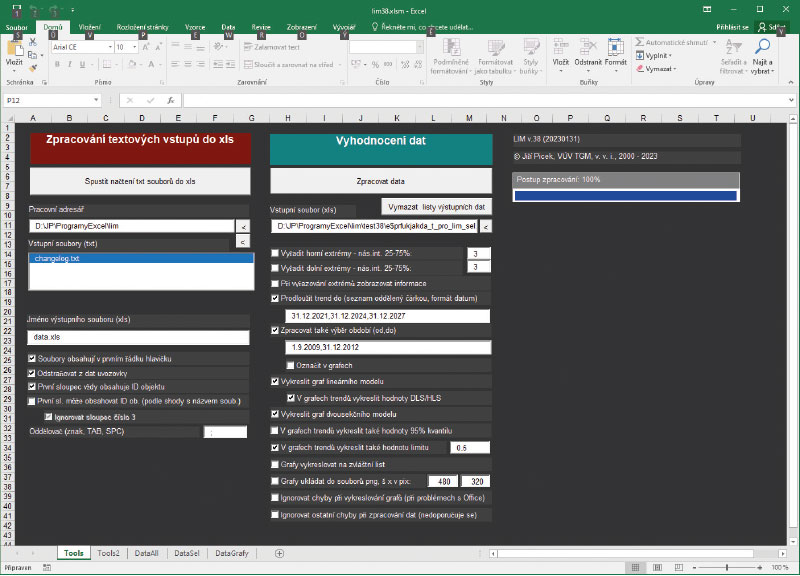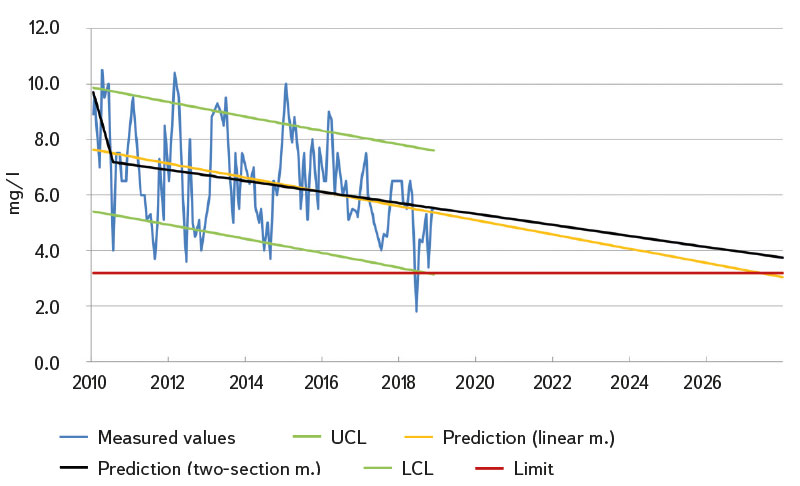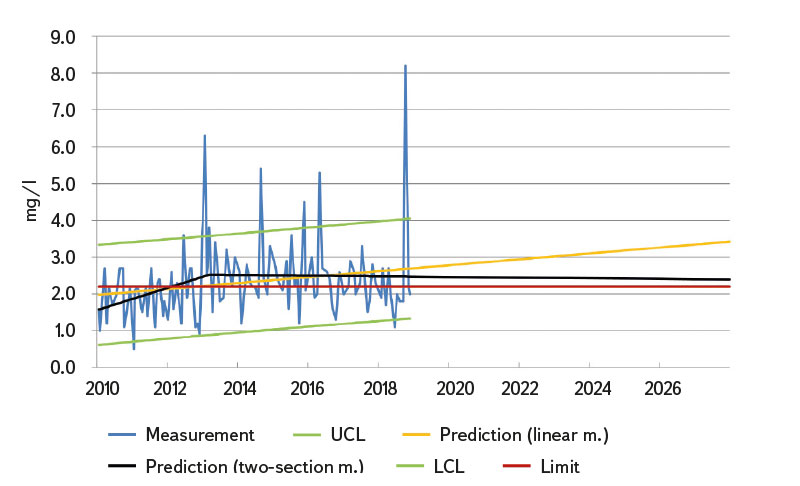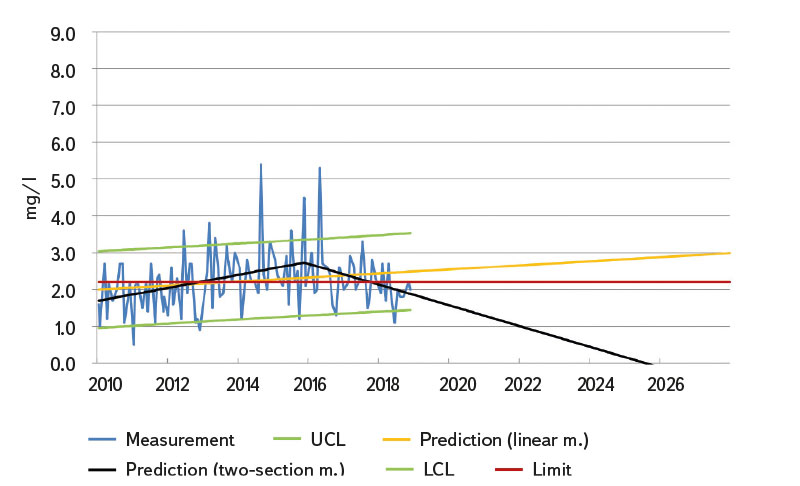ABSTRACT
This article presents the results of trend assessment of selected chemical and physicochemical indicators of surface water status. The assessment approach is based on a similar procedure for assessing significant upward trends of pollutants and trend reversals in groundwater bodies. The procedure is based on measured concentrations from 2010 to 2018 and estimates concentrations at the end of 2021, 2024, and 2027. For the trend assessment, data from Czech river basin state enterprises were used to assess the ecological status/potential and the chemical status of surface water bodies. However, only part of the profiles with measured concentrations met the time series requirements. The assessment of trends towards the end of 2024 and 2027 shows that some indicators (polyaromatic hydrocarbons, adsorbable organically bound halogens – AOX, and nitrate nitrogen) are projected to improve compared to the status as of 2018. On the other hand, a slight deterioration is predicted for biochemical oxygen demand, dissolved nickel, and ammonia nitrogen.
INTRODUCTION
For groundwater, an assessment of pollutant trends [1] is required when assessing chemical status, so that cases where the pollutant still meets the limit of good status, although its concentration rises significantly, can be detected in time. However, in the case of surface waters, no method has yet been established in the Czech Republic that would indicate in advance the imminent deterioration of ecological or chemical status of surface waters. For this reason, a procedure for assessing trends in surface water pollutant concentrations was developed. It is based on the methodology for assessing significant upward trends in groundwater pollution concentrations, which was already used in the second cycle of plans and which is based on the recommendations of the Groundwater group for the joint implementation of the Water Framework Directive [2]. Since there are a large number of profiles and indicators, it was necessary to use a relatively simple statistical procedure and create a program that would make the work more efficient and enable the assessment of a large amount of data.
Statistical methods were used as the basic tool – a linear trend using linear regression and a “two-section” model, which makes it possible to statistically detect any break in the trend. By extending the trend, predicted pollutant concentrations were calculated in three time periods – three, six, and nine years from the end of the measured concentrations [3].
For this methodological procedure, to assess long-term trends, individual measured concentrations were used of selected indicators found within the implementation of surface water surveillance and operational monitoring at monitoring sites representative for the assessment of the status/potential of surface water bodies. The results of the trend assessment are therefore related to a specific given indicator and monitoring site (profile).
METHODOLOGY AND DATA USED
For the trend assessment, a time series of data from the monitoring of the assessment of status of surface water bodies from 2010 to 2018 was used, according to documents provided by the river basin state enterprises for the status assessment. Based on the methodology (above), the most relevant indicators were first determined, and then the profiles that meet the conditions which are listed below. Data from selected profiles and indicators were then modified and assessed by software for trend assessment prepared by TGM WRI. The results of the status assessment for selected indicators were also used. Assessment of surface water status is carried out every three-year period (the last one was for 2016–2018).
Selection of indicators, time series requirements and data modification
Selection of indicators and surface water monitoring sites was determined by the results of ecological and chemical status assessment primarily for the last three-year period and time series from 2010 to the end of 2018.
Criteria for general selection of indicators for which the long-term trend of concentrations in water matrix should be analysed were as follows:
- it is a chemical or physico-chemical indicator for assessment of chemical status or ecological status/potential of surface water bodies;
- for the indicator, the environmental quality standard (EQS) or the limit between good and medium ecological status/potential is determined by a characteristic value expressed as an average or median [4–6] and, at the same time, these are not given by a range of values (i.e., indicators are not assessed where the characteristic value is maximum and/or minimum);
- the indicator is not subject to decay or transformation into other substances over time;
- the indicator is not expressed as the sum of several substances with different limits of quantification;
- the indicator is monitored annually within the Czech Republic in a water matrix at a minimum of 5 % of representative monitoring sites for assessing status/potential of surface water bodies;
- for most years, the indicator has a lower amount of data, below the limit of quantification of 75 % within monitoring throughout the Czech Republic;
- the indicator comes out as non-compliant in more than five surface water bodies in the latest three status/potential assessments in the Czech Republic;
- the concentration of the indicator is demonstrably increased anthropogenically, and measures can be proposed to reduce it.
Based on these criteria, 15 indicators were selected for assessment (Tab. 1).
Tab. 1. Summary of assessed quality indicators
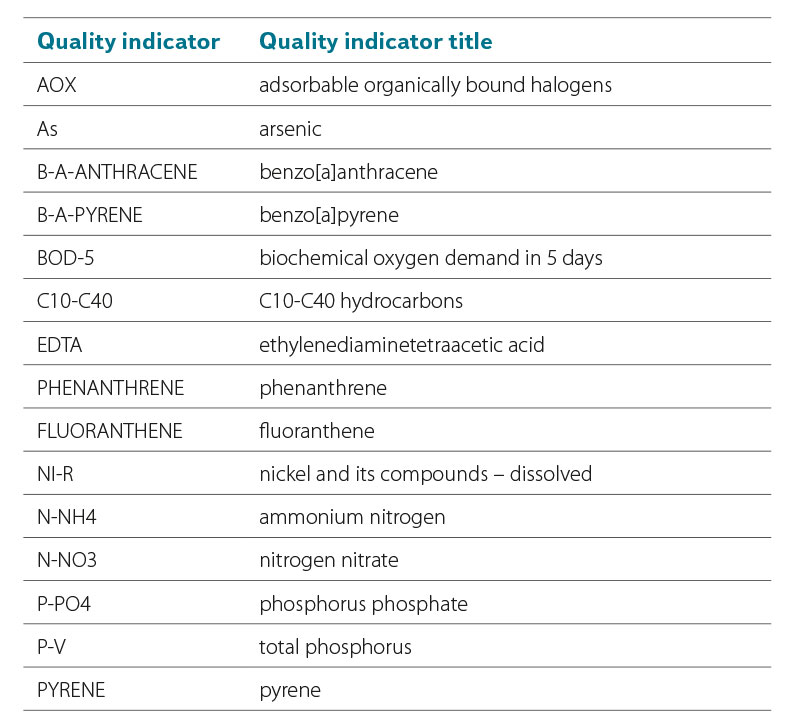
As part of testing, some indicators were excluded that met the requirements, but which, for various reasons, were not relevant for assessing the trend – manganese, iron (anthropogenic origin of increased concentrations cannot be proven), water temperature and transparency (these are not pollution indicators, but other indicators). Pesticides and their metabolites were also excluded, as well as indicators that are part of the total sum of a given group of chemical indicators, including their decay and reaction products or metabolites (e.g., trichlorobenzenes).
Since there is a requirement for nickel in the chemical status assessment to be considered as dissolved, all measurements were also excluded where total nickel was analysed, which, for the status assessment needs, was subsequently recalculated using a derived constant.
When selecting profiles, the following requirements were made within the time series:
- the minimum length of a continuous time series had to be six years, with the last year having to be 2018;
- in each year there had to be at least six measurements for general physico-chemical indicators and priority substances, and at least four measurements for specific pollutants;
- of these minimum six or four measurements, at least 50 % had to be above the limit of quantification each year;
- if the maximum limit of quantification value for an indicator and a profile was greater than twice the minimum limit of quantification value, this profile and indicator were excluded from the trend assessment.
The final stage of data preparation was the replacement of results below the limit of quantification. If the limits of quantification were the same for the profile and indicator for the entire period, they were replaced by half the value; in the case of different limits, they were replaced by half the value of the smallest limit of quantification for the profile and indicator.
It is obvious that in the case of such strict requirements for time series, a significant part of the measurements had to be excluded. The most profiles to be excluded were for C10-C40 hydrocarbons, nickel, and arsenic. In contrast, the most profiles which remained were for phenanthrene, nitrate nitrogen, fluoranthene, adsorbable organically bound halogens (AOX) and ethylenediaminetetraacetic acid (EDTA) – around 80 % of all monitored profiles in the last three years.
Trend calculation, software used
The trend assessment procedure is based on two calculation methods.
The first procedure is the use of a linear trend with the help of linear regression consisting of approximation of the measured data with a straight line. For a simple linear regression of the model, the slope and the constant indicating the displacement on the y axis must be calculated for the basic equation of the line in the general form y = a x + b. In this case, the indicator concentration in a water matrix is dependent on time. The least squares method is used to estimate the slope and the constant.
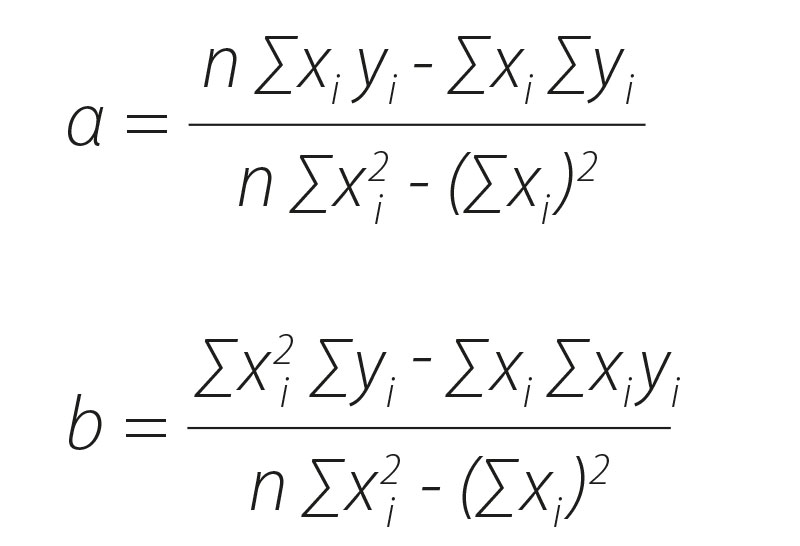
where
a is slope of the straight line
b constant
xi date of the measurement
yi pollutant concentration
n number of measurements
From the derived equation of the straight line, based on data from the time series 2010–2018, a prediction of the indicator concentration is calculated after three, six, and nine years from the end of the measurement. Therefore, in the case of these trends, the prediction is at the end of 2021, 2024, and 2027.
The second method assumes that the trend may have changed over a longer period of measurement. The basic principle – linear regression – remains the same; however, the program finds one breaking point where the line of the first linear regression transitions at a common point to the second linear regression. As with simple linear regression, the optimal breaking point is found using the method of least squares for the entire analysed time series of measurements, i.e., the variant with the smallest deviations of the measured concentrations from both linear regression lines is used. As a result of this two-section model, the course of the measured concentrations thus has two straight lines with different slope and shift constant. Here, based on the second straight line, the expected concentration in three, six, and nine years is also calculated. Subsequently, the result of the simple linear regression is compared with the two-section model using the F-test (which again uses the results of the least squares method to assess the deviations of the measured concentrations from the interleaved lines of both the simple linear regression and the two-section model in order to refute or confirm the null hypothesis that in the given period of time there is no breaking point) and the model that demonstrates greater reliability is selected.
When calculating trends, there is an option to exclude outliers or extremes, but this was not used (see below).
To assess trends and calculate statistical characteristics, the “lim” application was used, or more precisely, its current version lim38 (TGM WRI, January 2023). It is a continuously developed, modified, and modernized application implemented in the Microsoft Office environment. The application uses the Microsoft Excel environment (version 2016) and was implemented using the integrated programming language VBA (Visual Basic for Applications). The application loads the data entered in the form of a time series of the quality indicator values in the specified profiles (Fig. 1). For each profile and indicator, a trend is assessed (alternatively as a linear one-section and two-section model) and the basic statistical characteristics of the original time series and the assessed trend are calculated and recorded. The application also enables the automatic generation of graphs displaying interleaved trend curves. The resulting data are written both for each profile/indicator separately (in the format of separate notebooks/xlsx files) and also in the form of a summary table used for their further processing and assessment (Tab. 2). A result sheet is also generated for all profiles and indicators entering the data processing and trend calculation process.
Tab. 2. Characteristic values calculated by lim38 software
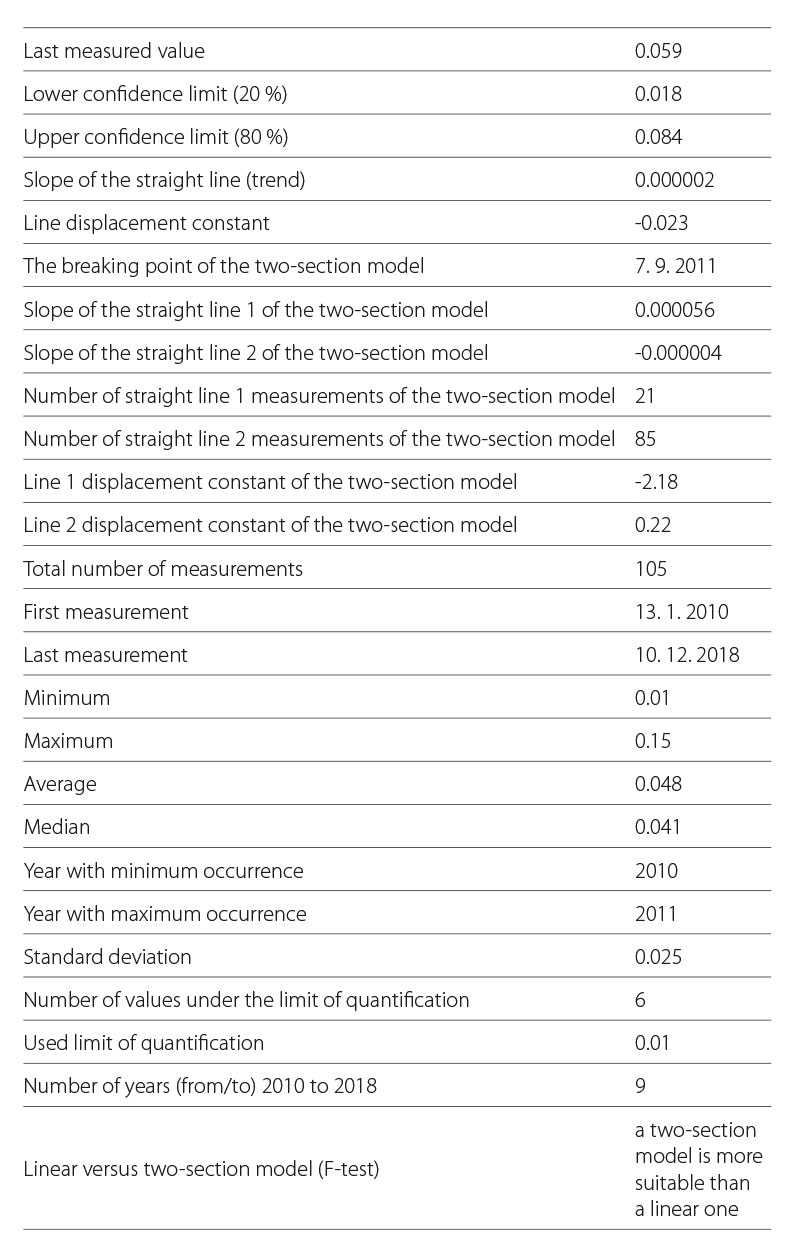
Fig. 1. Example of the lim user interface; the extent and method of data processing can be adjusted by selecting the appropriate options in the main window of the application
Processing results
The results of the latest, currently implemented assessment of the ecological and chemical status and the limit of good status (in this case, for the three-year period 2016–2018) are added to the result sheet with the results of the calculation of trends and predicted values, which contain both a linear and a two-section trend.
According to the selected model, corresponding values predicted for the end of 2021, 2024, and 2027 are then assigned to each assessed object and indicator. The predicted value is obtained by extending the trend – in the case of a two-section trend model, the second line. These are then compared with the value of the limit between good and non-compliant chemical status for the given indicator and receptor. It is assessed only with limits expressed as a median (for general physico-chemical indicators) or a mean (for priority and specific pollutants). If the maximum is also used as a limit (which applies to nitrate nitrogen for the selected indicators), the comparison is not carried out. In the case of priority and specific pollutants, the status assessment is carried out for each year separately and the worst result is used [4]; for general physico-chemical indicators, the entire three-year period is assessed together [4].
For each profile and indicator, we thus know the assessment result for the three-year period 2016–2018 (i.e., compliant or non-compliant) – which we can understand as the present – and, depending on the limit of good status, the result for the end of 2021, 2024, and 2027.
Examples of the selected profile assessment are given below.
Ammonia nitrogen on the Loučná – Tržek profile (Fig. 2) was assessed as non-compliant in the past three-year period – the limit of good status is 0.1 mg/l. According to the trend assessment, both the linear and the two-section trends are decreasing; however, according to the two-section trend, the decreasing trend has been significantly faster since May 2015. Accordingly, the ammonia nitrogen content could already be in good status at the end of 2021. At the same time, according to the F-test, the two-section model is more reliable.
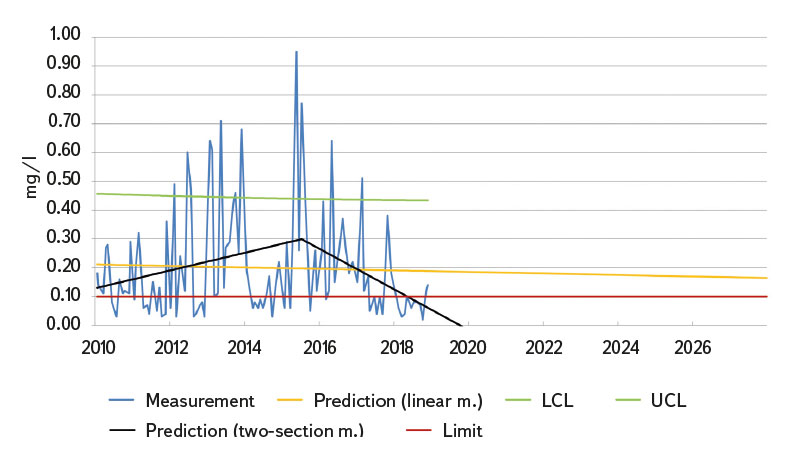
Fig. 2. Calculation of ammonia nitrogen trend in monitoring the Tržek profile, Loučná river
UCL: Upper confidence limit (80 %), LCL: Lower confidence limit (20 %)
Limit: The boundary between good and medium status or environmental quality standard
Data source: Povodí Labe, State Enterprise
Nitrate nitrogen was also assessed in the same profile (Fig. 3). It was also classified as non-compliant for the three-year period 2016–2018; the limit of good status is 3.2 mg/l. In this case, the results of the linear and two-section models are comparable, the concentrations decrease similarly, and good status should be reached around 2027. Since the linear model came out as more reliable, if this trend continues, good status will be reached just before the end of 2027.
Fig. 3. Calculation of nitrate nitrogen trend in monitoring the Tržek profile, Loučná river
UCL: Upper confidence limit (80 %), LCL: Lower confidence limit (20 %)
Limit: The boundary between good and medium status or environmental quality standard
Data source: Povodí Labe, State Enterprise
When processing trends, the exclusion of outliers and extremes was considered, since mainly occasional high values significantly affect the final assessment. This is typical for the course of a time series of biochemical oxygen demand (BOD). The software allows these outliers to be excluded. Again, trends for BOD5 were calculated on the Loučná – Tržek profile, both for all values and with the exclusion of extremes (defined as three times the 25–75 % interval); see Figs. 4 and 5. BOD5 was non-compliant in the ecological status assessment; the limit of good status is 2.2 mg/l. There are a total of four measurements above 5 mg/l in the time series, with the two highest values excluded when discarding outliers. While maintaining all values, a linear trend, which is rising, was assessed as more reliable; after removing outliers, a two-section model was recommended, where a significant break occurs in December 2015 and the trend is decreasing. The time data of the breaking point is also different for both variants – when maintaining all values, it is much earlier – in April 2013, and after that date the trend is also decreasing, but the decline is much slower.
Fig. 4. Calculation of BOD5 trend in monitoring profil Tržek, Loučná river for all measurements HLS: Upper confidence limit (80 %), DLS: Lower confidence limit (20 %) Limit: The boundary between good and medium status or environmental quality standard
Data source: Povodí Labe, State Enterprise
Fig. 5. Calculation of BOD5 trend in monitoring the Tržek profile, Loučná river; measurements without outliers
UCL: Upper confidence limit (80 %), LCL: Lower confidence limit (20 %)
Limit: The boundary between good and medium status or environmental quality standard
Data source: Povodí Labe, State Enterprise
RESULTS AND DISCUSSION
Based on the results of the trend assessment, a table of individual indicators was prepared for all assessed profiles together, where there is always a proportion of compliant and non-compliant profiles based on the latest status assessment (i.e., as of 2018) and then the same proportions at the end of 2024 and 2027 (Tabs. 3 and 4). The prediction was also prepared for the end of 2021 but it was not used due to the fact that the preparation of the status assessment for the three-year period 2019–2021 is currently underway. Nevertheless, it will be interesting to compare the results of this assessment with the calculated trends.
The table shows the proportion of compliant and non-compliant profiles for 2018 which, however, does not correspond to the results for the entire Czech Republic. The main reason is that these are only profiles that have met the requirements for the length and completeness of the time series and for the proportion of measurements below the limit of quantification. Also, neither the limit of good status, set as a maximum (which is the case for nitrate nitrogen), nor the results of a matrix other than water (assessment of benzo[a]pyrene in fingerling) are taken into account here. However, most of the differences are below 10 %. More significant differences are for EDTA, phenanthrene, fluoranthene, and pyrene, where the situation is more favourable in all profiles (e.g., fluoranthene is non-compliant in all profiles only for 54.7 %, while in selected profiles 89.7 %), and for nitrogen nitrate, where, on the other hand, there are non-compliant profiles in all profiles and, taking into account the maximum values, 49.7 % (only 39.5 % for selected profiles).
Based on these statistics, it can be stated that, according to predictions, a significant improvement should occur for AOX, benzo[a]pyrene, fluoranthene and pyrene, and a slight improvement is expected for phenanthrene and nitrogen nitrate. In contrast, for BOD5, nickel and ammonium nitrogen, the model found a slight deterioration. For the other indicators, the results in subsequent years are practically the same; from the reliability point of view, differences of up to 5 % are negligible. However, it should be noted here that the model can only work with a linear trend, possibly with a single breaking point, and the concentrations of pollutants in surface waters show significant fluctuations. For BOD5 (and possibly for some other indicators as well), the result is strongly influenced by occasional significantly increased values, which can worsen the results of the trends, as was seen in the example of the Loučná – Tržek profile. When deciding whether to keep the original results or use only measurements without outliers, we took into account two factors: firstly, that these are not measurement errors, but actual measured values that will probably be repeated in the future; secondly, the fact that that the assessment for this indicator is carried out by comparing the limit, which is set as the median, so outliers will not be reflected in it. In the end, an assessment with all values was used, but with the knowledge that it is probably a worse result than what will be reflected in the status assessment.
Tab. 3. Environmental quality standards (NEK) and good status boundaries for the indicators assessed
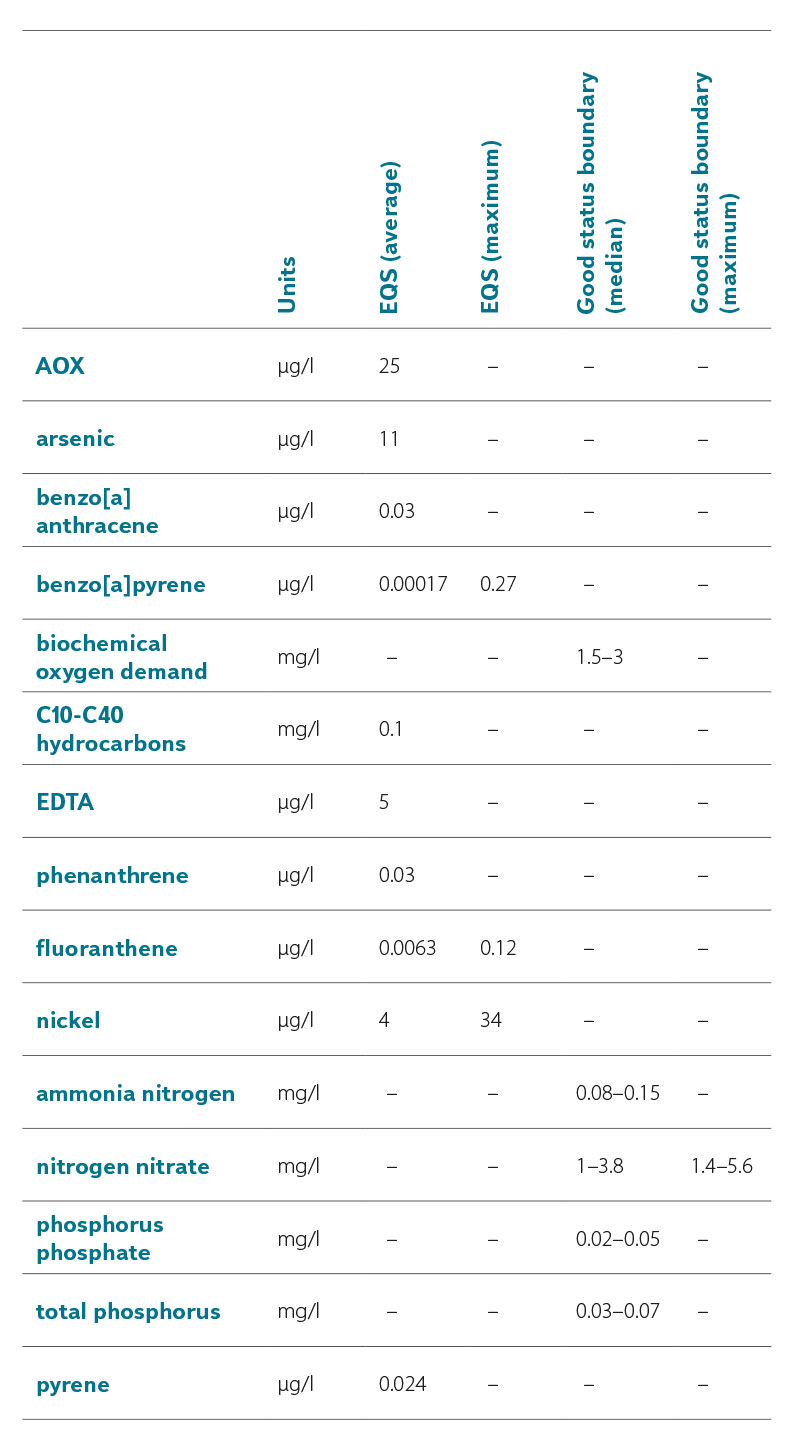
Tab. 4. Proportions of compliant and non-compliant profiles at present (2018) and at the end of 2024 and 2027
Data source: Povodí Labe, State Enterprise
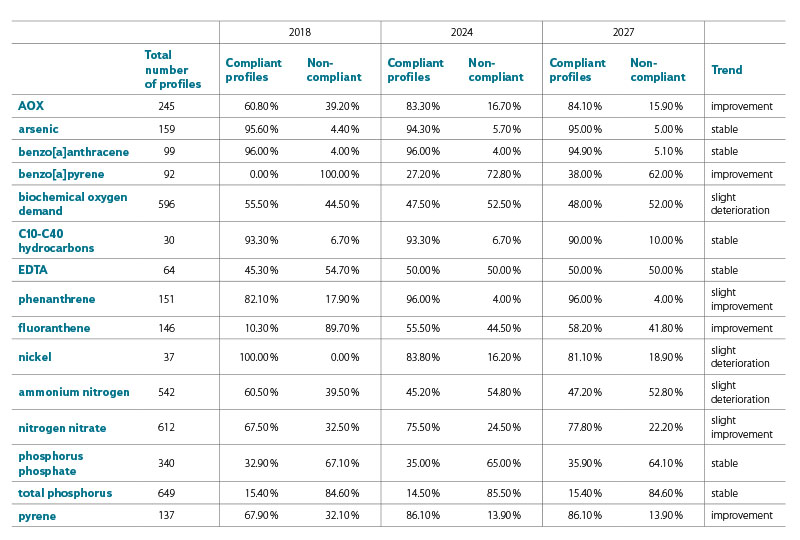
CONCLUSION
The trend results show that there is an improvement or at least a steady status for the assessed polyaromatic hydrocarbons. However, these predictions may be overtaken by proposed changes at the European level in the assessment of fluoranthene, where the limit is to be significantly tightened, while the limit for benzo[a]pyrene is to be abolished (so this indicator would not be assessed at all). Improvement is also predicted for adsorbable organically bound halogens and nitrate nitrogen. In contrast, a slight deterioration was indicated for BOD5, nickel and ammonium nitrogen; however, for BOD5 the deterioration will probably not be reflected in the status assessment, and for nitrate nitrogen it can be assumed that, due to the large increase in the price of industrial fertilizers, the situation will probably improve. The reasons why concentrations should deteriorate for dissolved nickel are not clear, but a stricter environmental quality value has been proposed for it as well.
The weaknesses of this assessment were shown here, as the actual course of the measured concentrations can rarely be sufficiently expressed by a linear or two-section model. The results also show that the statistical assessment of pollutant trends is not a suitable method for individual profiles. In addition to the limitations resulting from linear trends, only a small part of the profiles will meet the requirements for the length of the time series and the number of measurements for most indicators. Therefore, the results cannot be used to identify profiles that currently meet the limit of good status, but are in danger of deteriorating soon. It can be assumed that they are more useful for determining the overall tendencies of individual indicators; however, again only on the assumption that the conditions will not change significantly – be it hydrological or the level of anthropogenic influences. Nevertheless, the trend assessment should be supplemented by other types of analysis: for example, by comparing predicted and actual results of status assessment, the proportion of non-compliant measurements in individual three-year periods, or by comparing three-year averages.
Acknowledgements
The article was written as part of the TGM WRI internal grant “Assessment of trends in concentrations of chemical and physico-chemical indicators of the status of surface waters”. We thank the river basin state enterprises for providing the data.
The Czech version of this article was peer-reviewed, the English version was translated from the Czech original by Environmental Translation Ltd.
